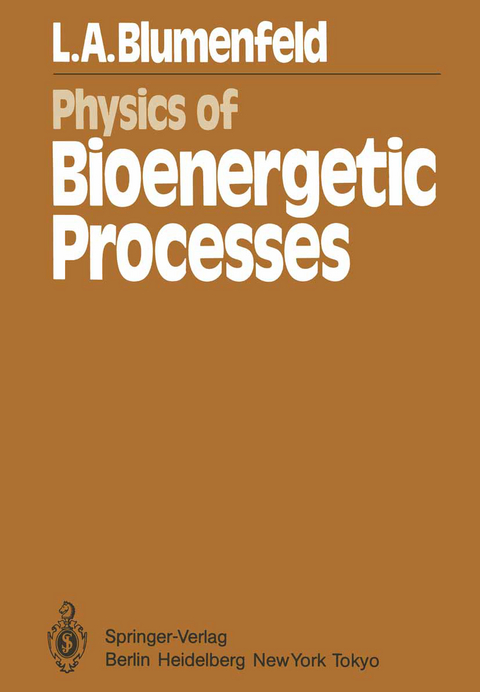
Physics of Bioenergetic Processes
Springer Berlin (Verlag)
978-3-642-68527-9 (ISBN)
1. Introduction.- 2. Phenomenology of Bioenergetic Processes.- 2.1 Muscle Contraction.- 2.2 Active Transport of Ions.- 2.3 Substrate Phosphorylation.- 2.4 Membrane Phosphorylation.- 2.5 Formulation of the Main Physical Problems in Bioenergetics.- 3. Membrane Phosphorylation: Chemiosmotic Concept and Other Hypotheses.- 3.1 Survey of Existing Hypotheses.- 3.2 What is the Meaning of the Words: "Energy Coupling of Chemical Reactions"?.- 3.3 Transmembrane Electrochemical Potential, its Components and Physical Principles of its Utilization in Bioenergetic Processes.- 3.4 The Chemiosmotic Concept. Experimental Data Pro and Contra.- 4. Proteins as Molecular Machines.- 4.1 The Physics of a Small Machine.- 4.2 Conformationally Nonequilibrium States of Proteins.- 4.3 Nonequilibrium Mixture of Molecules or Nonequilibrium Molecules?.- 5. Conformational Relaxation as the Elementary Act of Bioenergetic Processes.- 5.1 Muscle Contraction.- 5.2 Active Transfer of Ions.- 5.3 Enzymatic Catalysis.- 5.4 Membrane Phosphorylation.- 6. Conclusion.- References.
| Erscheint lt. Verlag | 6.12.2011 |
|---|---|
| Reihe/Serie | Springer Series in Synergetics |
| Zusatzinfo | X, 132 p. |
| Verlagsort | Berlin |
| Sprache | englisch |
| Maße | 170 x 244 mm |
| Gewicht | 268 g |
| Themenwelt | Naturwissenschaften ► Physik / Astronomie ► Allgemeines / Lexika |
| Naturwissenschaften ► Physik / Astronomie ► Angewandte Physik | |
| Naturwissenschaften ► Physik / Astronomie ► Theoretische Physik | |
| Schlagworte | biological physics • chemical potential • Energiehaushalt • Energiehaushalt (Physiol.) • Equilibrium • Kinetics • low temperature • Molecule • Physics • Potential • proteins • Synergetics • Temperature • thermodynamics |
| ISBN-10 | 3-642-68527-7 / 3642685277 |
| ISBN-13 | 978-3-642-68527-9 / 9783642685279 |
| Zustand | Neuware |
| Haben Sie eine Frage zum Produkt? |
aus dem Bereich


